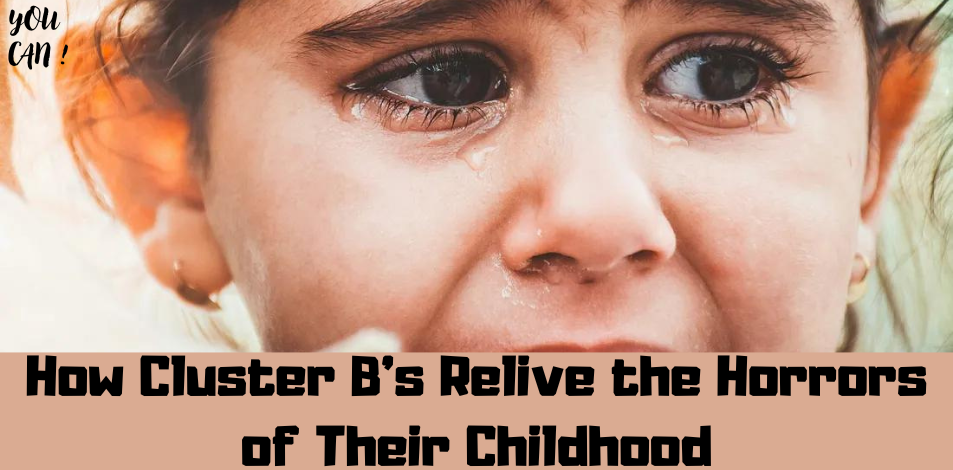
Individuals with Type B personality disorders—such as borderline, narcissistic, histrionic, and antisocial personality disorders—often relive their childhood traumas in different ways. Here’s how this can manifest:
Borderline Personality Disorder (BPD)
Emotional instability: Individuals with BPD often experience intense emotions and mood swings, which can be triggered by perceived abandonment or rejection. These emotional reactions can be linked to childhood trauma and unstable relationships.
Related : 14 Signs to Test if YOU are a Narcissist
Personality disorders: Relationships can be chaotic and intense, reflecting past experiences of inconsistent or abusive care.
Self-image issues: A fragmented or unstable self-image can stem from childhood experiences of neglect or invalidation.
Self-harm and suicide: Behaviors such as self-harm can be coping mechanisms for overwhelming feelings rooted in past trauma.
Narcissistic Personality Disorder (NPD)
Grandiosity and entitlement: These traits can be defenses against deep-seated feelings of inadequacy and worthlessness resulting from childhood neglect or excessive criticism.
Need for admiration: A constant need for validation may stem from a lack of affirmation and love during childhood.
Lack of empathy: Difficulty empathizing with others can result from not experiencing consistent, compassionate care.
Poor self-esteem: Despite outward arrogance, individuals with NPD may have a fragile self-esteem, constantly at risk of being undermined by perceived criticism or failure.
Historic Personality Disorder (HPD)
Attention Seeking: This behavior can be a response to feeling ignored or devalued as a child.
Dramatic Emotions: Intense, rapidly changing emotions can be a reenactment of emotional distress experienced during childhood.
Otherwise Affected: Being easily influenced by others can reflect a lack of stable identity formation during critical developmental periods.
Excessive Need for Approval: Constantly seeking approval and reassurance can be a way to fill the void left by emotionally unavailable caregivers.
Antisocial Personality Disorder (APD)
Disregarding Others: This can stem from early experiences of neglect, abuse, or witnessing violence, leading to a lack of trust and empathy.
Impulsivity: Engaging in risky or reckless behaviors can be a way to cope with unresolved childhood trauma.
Related : How Can a Narcissist Be a Religious or Spiritual Leader?
Aggression and Manipulation: These behaviors can be learned through responses from environments where power and control are critical to survival.
Lack of remorse: Lack of guilt or remorse can be linked to an inability to form healthy emotional attachments during childhood.
Common Mechanisms
Reenactment: Reliving past trauma through relationships and behaviors that reflect childhood experiences.
Projection: Attributing one’s unacceptable feelings or memories to others as a defense mechanism.
Dissociation: Disconnecting from reality as a means of escaping painful memories or feelings.
Coping and Treatment
Treatment: Approaches such as dialectical behavior therapy (DBT) for borderline personality disorder, cognitive behavioral therapy (CBT), and psychodynamic psychotherapy can help individuals understand and manage their symptoms.
Medications: Antidepressants, mood stabilizers, and antipsychotics may be prescribed to manage symptoms.
Support Systems: Building a strong support network of friends, family, and mental health professionals is crucial to recovery.
Understanding the relationship between childhood trauma and behaviors associated with BPD is vital to the effectiveness of treatment and support.




